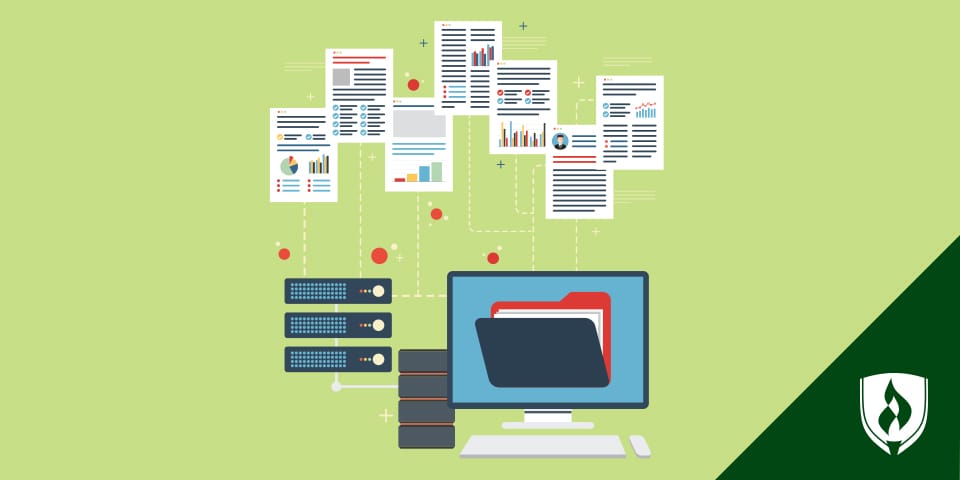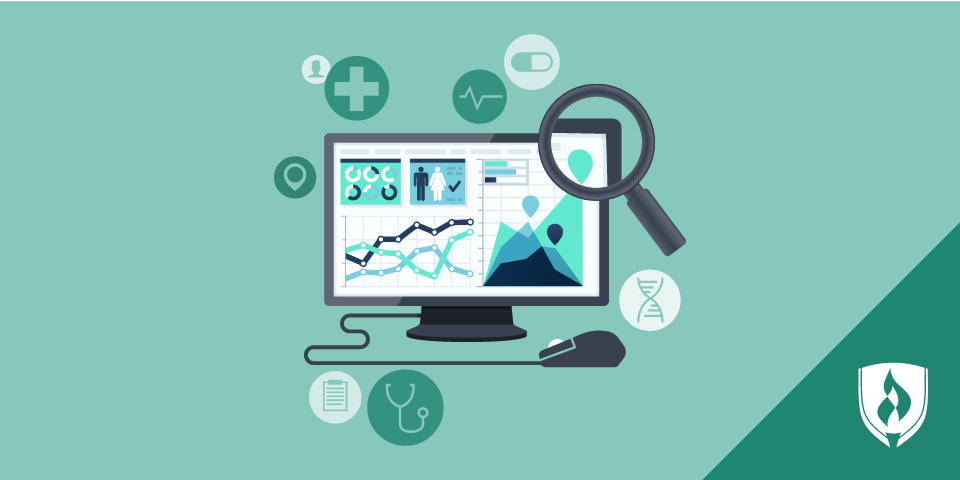What Is Health Information Management? The Intersection of Health, Business and IT
By Kirsten Slyter on 01/04/2021

Healthcare can be a tricky industry to pin down. There are medical careers, of course, but anyone who starts searching will soon discover careers in technology, business, science and finance—all of which are embedded within the healthcare sector.
This is excellent news for anyone attracted to the job security or high demand that often marks a career in healthcare. Employment in healthcare occupations is projected to grow much faster than the average for all occupations from 2023 to 2033, adding about 1.9 million new jobs each year, according to the Bureau of Labor Statistics (BLS).1
With that in mind, it is an excellent time to pursue a career in healthcare. If you are interested in taking advantage of the steady growth in healthcare roles, but you don’t see yourself working directly with patients, you might want to consider a relatively new area of expertise: health information management.
What is health information management? Read on to see your questions answered in this breakdown of the up-and-coming healthcare specialty.
What is health information management, exactly?
Health information management (HIM) is the practice of acquiring, analyzing and protecting digital medical information vital to quality patient care. As technology applications in all sectors of healthcare grow, professionals are needed to help integrate and support them. The role is basically a mashup of business, health science and information technology (IT).
As hospitals, clinics and other healthcare facilities have adopted electronic health records (EHRs), the healthcare field has seen an expanded need for technology solutions to maintain their database systems as well as envision new technology adaptations.
Sensitive and private patient information, for example, not only needs to be entered and easily located in a massive stream of data, it also needs to be protected, verified for accuracy and constantly updated by medical professionals.
When you add systems for medical billing and coding, coordinating insurance claims, the necessary digital classification of injuries and diseases and even platforms that allow patients to schedule appointments and view test results, you have a ton of data to integrate. These operations need to be coordinated, organized and well-managed. The field of health information management deals with all of the above.
What do HIM professionals do?
HIM professionals act as a bridge between clinicians, payors, regulators and patients. This role is needed in many different environments to connect varying systems together for the most efficient, accurate and secure information possible.
In a hospital system, HIM professionals can be part of the IT team helping to oversee electronic health records. When working at an insurance provider, they might manage the billing, coding and payment system. They make sure that diseases, conditions and tests are standardized and correctly processed.
HIM professionals can have a variety of job duties depending on where they work and their job titles. There’s a surprising variety of health information roles out there depending on your future goals and individual strengths. For more on that, check out Health Information Career Paths: Exploring Your Potential Options.
Let’s walk through a few options:
- Medical billers submit medical claims to insurance companies or government providers from physician offices, hospitals or healthcare clinics.
- Insurance claims specialists help determine coverage for the claims submitted to insurance companies.
- Health information technicians code patients’ medical information for billing. They also make sure the patient’s health information record is complete.
- Health information managers have extensive experience in health information and oversee entire departments of professionals in health information roles.
Where do health information management professionals work?
Expertise in HIM is pretty versatile when it comes to the settings where it can be applied. Health information management professionals can oversee the healthcare information systems and EHR operations in hospitals or any medical facility. You could also find them working for insurance companies, taking charge of their systems to ensure accurate billing and efficient information exchanges with the patients and providers.
HIM professionals can also find careers in state and local government, especially in public health arenas. Pharmaceutical companies and social service organizations also need these experts to keep their patient information organized and secure.
And that’s only the beginning. Other industries that employ health information professionals include academic institutions, consulting agencies, government agencies and healthcare software companies.
How to become a health information management professional
Health information management involves a blending of several different branches of study. HIM programs incorporate the disciplines of medicine, management, finance, information technology and law into one curriculum. This wide base of knowledge makes HIM graduates useful for many different needs in healthcare.
When it comes to getting into HIM, there are several paths you can take depending on the job you’re planning to apply for.
3 Health Information Management career paths to consider
- Medical Billing and Coding Certificate: This is the quickest path to get into the field. At Rasmussen College, it can take you as few as nine months, and you can prepare to apply to jobs like medical biller/coder, patient registrar and patient services representative.2
- Health Information Technician Associate’s degree: This degree can help you pursue your RHIT certification, which can help you qualify for jobs like health information technician, patient care coordinator or release of information specialist.
- Health Information Management Bachelor’s degree: In this program, you’ll learn more about how you can lead within HIM and prepare for the RHIA certification, which can qualify you to apply for positions like health information services manager, clinical documentation specialist or compliance officer.
These offerings are designed to fit the needs of health information professionals at different stages within their careers. Students at Rasmussen College can start with earning a Medical Billing and Coding Certificate, earn experience and then seamlessly transfer the credits they’ve earned into the Associate’s or Bachelor’s degree programs.
Explore your potential health information career path
Now that you know a little more about what the health information management field is all about, you might be curious what each education option might require. Want to learn more? Visit Rasmussen's Health Information Management degree page for a full breakdown.
Check out our article, "Healthcare Administration vs. Health Information Technology: Clearing the Confusion".
1Bureau of Labor Statistics, U.S. Department of Labor, Occupational Outlook Handbook, [career information accessed December, 2024] www.bls.gov/ooh/. Information represents national, averaged data for the occupations listed and includes workers at all levels of education and experience. This data does not represent starting salaries. Employment conditions in your area may vary.
2Completion time is dependent on the number of transfer credits accepted and the number of courses completed each term.
This article was originally published in 2018. It has since been updated to include information relevant to 2025.




